#knowledge gaps
Explore tagged Tumblr posts
Text
Sometimes you grow up with weird gaps in your knowledge. When I was living with my parents, we had an electric lawnmower with an extension cord. Rather, a series of extension cords that you had to consider when navigating around the trees in the yard. Eventually we replaced it with an electric mower that you would plug in to charge, and we were free of the cord and it was much easier.
Cut to adulthood and my husband and I have bought a house, and the lawnmower is out of gas so I offer to go get some because he's busy.
I ask, innocently and sincerely, "So, where do you get mower gas? At Walmart or something?"
My husband stares at me as if I'm joking. "What?"
"Where do I buy mower gas?"
And that's how I learned that gas mowers just use gasoline from the gas station. It's not a specific type of gas.
I was 30.
3 notes
·
View notes
Link
1 note
·
View note
Text
The Case for Investing in Staff Training: Building a Stronger Team
In a world where technological advancements and global markets evolve rapidly, the strength of an organization lies in its ability to adapt and grow. Investing in employee training is not merely a business expense; it is a strategic move that can redefine your company’s future. By focusing on targeted skill development, businesses can enhance their competitive edge and foster a culture of continuous improvement. As companies strive to remain relevant, the emphasis on strategic training becomes a pivotal factor in achieving long-term success.
Training Matters for Global Expansion
When venturing into new markets or launching innovative products, investing in staff training becomes indispensable. This training equips your team with the skills needed to navigate the complexities of international business, such as understanding cultural nuances and managing global partnerships. Strategic training ensures your team is prepared to handle exports efficiently, maximizing profit and distribution control. It also aids in developing a comprehensive international business plan with clear metrics to monitor success, which is vital for thriving in competitive markets.
Enhance Training, ROI with Employee Feedback
To maximize the return on investment from your corporate training programs, adopting a flexible and responsive approach is key. By continuously integrating feedback mechanisms, you can gain insights into how employees perceive and benefit from the training. This allows you to tailor the content and methods to better meet the evolving needs of your organization. Such an approach not only boosts employee engagement but also improves information retention, leading to measurable gains in productivity and skill development.
Determine Skill Gaps
Performance metrics and employee feedback provide invaluable insights into areas where training can make a meaningful impact. Metrics such as productivity levels, error rates, or customer satisfaction scores highlight specific skills or knowledge gaps affecting performance. Pairing these quantitative data points with qualitative feedback from team members creates a comprehensive view of what needs attention. For example, if customer complaints consistently cite delays, it may signal the need for time management training. Similarly, employees expressing challenges with new software could indicate a need for targeted technical education.
When to Consider University Programs
University programs offer a wide range of training opportunities that can be tailored to your company’s needs. Many institutions provide flexible learning options, including virtual courses, to accommodate busy schedules. For example, if your goal is to enhance your IT department's skills, different types of cybersecurity programs are available that cater to various expertise levels and learning formats. Similarly, universities often offer programs in leadership, project management, or technical fields that can address other team development goals. Choosing the right program ensures employees gain valuable, industry-relevant knowledge while aligning their growth with your business objectives.
Enhance Training Outcomes with Continuous Support
To truly make the most of your investment in staff training, it’s essential to provide ongoing support and resources that reinforce the skills learned. By offering continuous learning opportunities, such as follow-up workshops or online resources, you can help employees integrate their new knowledge into daily tasks. Establishing feedback channels allows you to gather insights from employees about the training’s effectiveness, helping you identify areas for improvement and maximize your return on investment. Implementing accountability structures, like setting clear goals and expectations, ensures that employees are motivated to apply their skills effectively.
Maximize Employee Growth Through Tailored Development
Tailored development programs allow businesses to align training efforts with the unique strengths and growth areas of each employee. Rather than taking a one-size-fits-all approach, customized training focuses on individual roles, skill levels, and career aspirations. This approach not only enhances the effectiveness of the training but also boosts employee engagement by demonstrating a commitment to their personal and professional growth within your company. Tailored development ensures that employees are equipped to excel in their positions while creating a pipeline of talent ready to take on future challenges.
Boost Workforce Skills Through Strategic Partnerships
Strategic partnerships with industry experts, educational institutions, and training providers can elevate workforce development efforts by offering access to specialized knowledge and resources. Collaborating with these partners allows businesses to implement training programs designed by professionals who understand current industry trends and best practices. For example, partnering with a local university for leadership courses or engaging a tech company to deliver hands-on software training ensures employees gain practical, up-to-date skills. Additionally, such partnerships can provide networking opportunities, mentorship programs, and certifications that enhance employee credentials and confidence.
Strategic training investments are a cornerstone of building a future-ready workforce. By aligning training initiatives with organizational goals, companies can foster an environment where employees are empowered to excel. This not only enhances individual capabilities but also drives collective success, ensuring the organization remains agile and competitive in a dynamic market landscape.
Share in the comments below: Questions go here
#staff training#technological advancements#organizational strength#targeted skill development#knowledge gaps#cybersecurity programs#ongoing support#reinforce skills#return on investment#accountability structures#employee motivation
0 notes
Text
The Power of Core Concepts in Microlearning: Confidence-Based Assessments, Spaced Repetition, and Retrieval Practice

In the rapidly evolving landscape of corporate training and education, microlearning has emerged as a transformative approach. It leverages short, focused learning sessions to deliver content in manageable chunks, making it easier for learners to absorb and retain information. However, to fully harness the potential of microlearning, three core concepts must be integrated into your strategy: confidence-based assessments, spaced repetition, and retrieval practice. An understanding of these concepts is essential to maximize the effectiveness of your microlearning initiatives.
Confidence-Based Assessments
Confidence-based assessments are a sophisticated tool designed to measure not just what learners know, but how confident they are in their knowledge. This dual focus on knowledge and confidence helps to create a more comprehensive understanding of learner competency.
Key Benefits of Confidence-Based Assessments:
Identifying Knowledge Gaps: By asking learners to rate their confidence in their answers, these assessments reveal areas where learners may think they understand the material but actually do not. This helps in pinpointing specific knowledge gaps that need to be addressed.
Enhancing Self-Awareness: Learners become more aware of their strengths and weaknesses. This self-awareness is crucial for effective learning, as it encourages learners to focus on areas that need improvement.
Promoting Better Learning Strategies: When learners recognize discrepancies between their confidence and their actual knowledge, they are more likely to adopt effective study strategies and seek additional resources to bridge these gaps.
Implementing Confidence-Based Assessments:
Rating Scales: Incorporate rating scales into quizzes and tests, asking learners to indicate how confident they are in their answers. This can be a simple scale from 1 (not confident) to 5 (very confident).
Feedback Loops: Provide immediate feedback on both the accuracy of the answers and the confidence ratings. This helps learners understand where their confidence aligns with actual knowledge and where it does not.
Adaptive Learning Paths: Use the data from confidence-based assessments to create adaptive learning paths that focus on areas needing improvement. This ensures that learners spend time on the content that matters most to their development.
Spaced Repetition
Spaced repetition is a learning technique that involves reviewing information at increasing intervals over time. This method is grounded in the psychological principle known as the spacing effect, which suggests that learning is more effective when spread out over time, rather than crammed into a single session.
Benefits of Spaced Repetition:
Improved Long-Term Retention: By revisiting information at spaced intervals, learners reinforce their memory, making it easier to recall information in the long term.
Combating the Forgetting Curve: Spaced repetition helps combat the natural decline in memory retention that occurs over time, known as the forgetting curve. Regular reviews at strategic intervals help maintain high levels of retention.
Efficient Learning: This method allows learners to focus on information that they are most likely to forget, optimizing study time and effort.
Implementing Spaced Repetition:
Scheduling Reviews: Use algorithms or spaced repetition software to schedule reviews of content at optimal intervals. This can be days, weeks, or months apart, depending on the complexity of the material and the learner's familiarity with it.
Progressive Difficulty: Start with simpler concepts and gradually increase the difficulty of review questions as the learner demonstrates improved retention.
Consistent Practice: Encourage learners to engage in spaced repetition consistently to build strong, long-lasting memories.
Retrieval Practice
Retrieval practice involves actively recalling information rather than passively reviewing it. This method has been shown to significantly enhance learning and retention, as it strengthens the neural connections associated with the recalled information.
Benefits of Retrieval Practice:
Strengthened Memory: Each time a learner recalls information, it strengthens the neural pathways associated with that knowledge, making it easier to retrieve in the future.
Enhanced Understanding: Retrieval practice encourages deeper processing of information, leading to better understanding and application.
Immediate Feedback: It provides opportunities for learners to receive immediate feedback on their recall efforts, helping to identify and correct misunderstandings promptly.
Implementing Retrieval Practice:
Frequent Quizzing: Incorporate frequent, low-stakes quizzes into the learning process. These quizzes should focus on recalling information rather than recognizing it.
Varied Question Types: Use a variety of question types, such as multiple-choice, short answer, and essay questions, to promote active recall and deeper understanding.
Cumulative Reviews: Design cumulative reviews that require learners to recall information from previous lessons, not just the most recent content. This helps to reinforce long-term retention.
Integrating the Core Concepts
To get the most out of your microlearning initiatives, it is crucial to integrate confidence-based assessments, spaced repetition, and retrieval practice seamlessly. Here’s how to create a cohesive learning strategy that leverages these concepts:
Design Adaptive Learning Paths: Use data from confidence-based assessments to create adaptive learning paths that guide learners through content based on their knowledge gaps and confidence levels. Integrate spaced repetition and retrieval practice into these paths to ensure that learning is both effective and efficient.
Develop Engaging Content: Create microlearning modules that incorporate elements of all three concepts. For example, a module might start with a brief review (spaced repetition), followed by a quiz that includes confidence ratings (confidence-based assessment) and active recall questions (retrieval practice).
Use Technology: Leverage learning management systems (LMS) and microlearning platforms that support these techniques. Many modern LMS platforms have built-in features for spaced repetition, confidence-based assessments, and retrieval practice.
Provide Continuous Feedback: Offer continuous, detailed feedback to learners based on their performance in retrieval practice and confidence-based assessments. This feedback should help them understand their progress and areas for improvement.
Monitor and Adjust: Continuously monitor learner progress through analytics and adjust the training programs as needed. This ensures that the learning strategy remains effective and aligned with the evolving needs of the learners.
Case Study: Effective Integration of Core Concepts
Consider a healthcare organization that needs to train its staff on new medical procedures and protocols. The organization faces challenges in ensuring that the training is retained over time and applied correctly in high-stress environments.
Implementation:
Microlearning Modules: The organization develops short, focused modules covering each new procedure and protocol.
Confidence-Based Assessments: Each module includes assessments where staff rate their confidence in their knowledge and skills.
Spaced Repetition: The learning management system schedules reviews of the procedures at increasing intervals, ensuring that the staff revisits and reinforces their knowledge over time.
Retrieval Practice: The modules include frequent quizzes and scenario-based questions requiring staff to recall and apply the procedures in simulated environments.
Results:
Improved Retention: Staff demonstrate significantly improved retention of procedures and protocols.
Increased Confidence: Confidence-based assessments help identify areas where additional training is needed, boosting overall confidence in applying new skills.
Enhanced Application: Retrieval practice ensures that staff can effectively apply their knowledge in real-world scenarios, leading to better patient outcomes.
Conclusion
Incorporating confidence-based assessments, spaced repetition, and retrieval practice into your microlearning strategy can transform employee training. These core concepts enhance knowledge retention, ensure continuous learning, and promote a deeper understanding of material. By leveraging these techniques, organizations can create highly effective and adaptive microlearning programs that meet the needs of today’s dynamic workforce. Embrace these strategies to unlock the full potential of microlearning and drive lasting improvements in your training outcomes.
#Confidence-based assessments#Spaced repetition#Retrieval practice#Microlearning#Employee training#Knowledge retention#Adaptive learning#Learning strategies#Corporate training#Long-term retention#Learning modules#Active recall#Learning management systems#Training effectiveness#Learner engagement#Knowledge gaps#Self-awareness#Learning feedback#Adaptive learning paths#Training customization#Memory reinforcement#Continuous learning#Training analytics#Professional development#Digital learning tools#Learning outcomes#Effective learning#Cognitive science#Training techniques#Real-world application
0 notes
Text

I've never been more normal in my life.
[First] Prev <–-> Next
#poorly drawn mdzs#mdzs#wei wuxian#lan wangji#jin zixuan#jiang yanli#Both LWJ and JZX are failing so miserably at the deception check in this scene.#The maneuvers are wild. I am putting them into a petri dish.#LWJ yelling at the guy he's madly infatuated with. Who is earnestly asking what's wrong and trying to bridge the gap between you.#Absolute fumble. No wonder WWX is fully convinced this guy hated him. LWJ was dropping all the wrong signs.#No really. If you have a fraught relationship with someone and they yell at you -#-You can't really walk back from that. All you can do is go 'Oh I make this person *miserable* huh?' and leave them be.#And JIN ZIXUAN. My GUY. What were you doing here? Was it nerves?#Like go you for knowing so many snake facts (that is real by the way I didn't make that up).#And true. Some people really do go wild for knowledge dumps. I am assigning JYL as one of those people. To help him recover the fumble.#JZX being a little bit (a lot bit) lame is probably the best thing for his character. I like him just a bit more for this.
2K notes
·
View notes
Text
Fantasy Guide to the Army
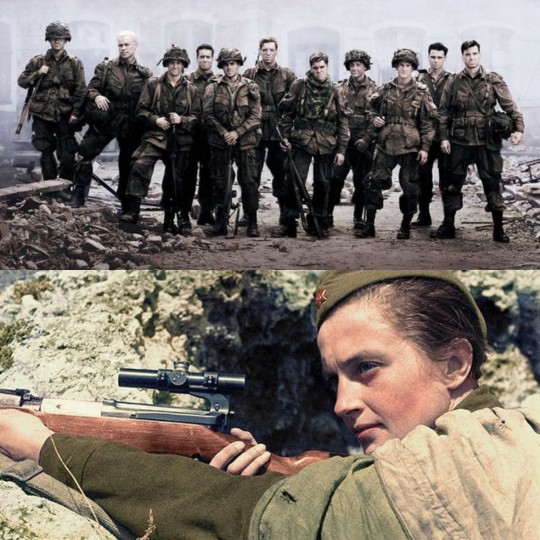
I have been asked to do this post for quite a long while and I finally got around to it. This guide is a basic guide, you may need to do further research into specific armies across the world. Armies are a necessary part to any world building, so what do we need to know about them?
(PS I had planned to include air force and navy but I am just one person and I cut myself, and the read more link, some slack)
Ranks
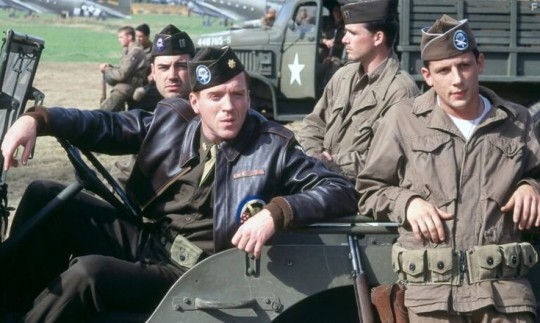
Field Marshal (FM) The Field Marshal is the highest rank of within the Army. The rank of Field Marshal was often granted in times of war (a general must have committed an act of valour, i.e. a victory). The rank can sometimes be used as a divisional command rank or brigade command. The UK, Austria-Hungary, Afghanistan, Germany, India, and Pakistan use the rank as a reward for achievement. Spain and Mexico use it for divisional command while countries such as Portugal, France and Brazil for use it for brigade command. The rank of Field Marshal is a "five star" position. The rank does not exist in the US army. They are addressed as Field Marshal Surname. Their insignia is two crossed batons surrounded by yellow leaves set under a crown.
General (Gen.) A General is the commanding officer of an army or army corps. It is currently the highest rank granted in most armies today, it is a 4 star position. A General is in charge of commanding large units, they are in charge of making strategic decisions for the army, oversee major military operations, manage the needs of the army. They are addressed as General Surname. Their insignia is four stars (US, France, Germany, Russia) and a sword and baton crossed under a crown and a star (UK). Lieutenant General (Lt.Gen) Lieutenant General commands an army corps or a division (tens of thousands of soldiers). They are also involved in strategic planning. They also hold positions within the Ministry of Defence/Equivalents. They would often serve as advisers to the government and aid Generals. It is a 3 star position and they addressed as Lieutenant General Surname. Their insignia is three stars (US, Germany, France, Russia) and a crossed sword and baton under a crown (UK)
Major General (Maj.Gen) Major General is a general officer in the army, responsible for leading and operational roles. They would command divisions of tens of thousands of soldiers. They support the officers above them, helping with strategy, executing the strategy, oversee the training of their units. They are addressed as Major General Surname. They are a 2 star position. Their insignia is a crossed sword and baton with a star (UK) and two stars (US, Germany, Russia, France). Brigadier General (Brig.Gen) Brigadier General is a one-star general officer in the army. They command brigades (3,000 to 5,000 soldiers), assisting Major Generals in tactical planning and coordination of operations. They are addressed as Brigadier General Surname. Their insignia is one star (Russia, Germany, US,), two silver stars (France) and s crown and three stars (for the UK, stars are known as pips). Colonel (Col) Colonels command brigades of about (3,000 to 5,000 soldiers), they are senior staff officers who both provide leadership to their units which are sometimes specialised agencies, such as task forces. Colonels are addressed as Colonel Surname. A silver eagle (US), a pair of diamond pips under a crown (UK), three silver pips upon shoulder braid with silver braid (Germany), three gold pips on a shoulder board with golden braid (France and Russia). Major (Maj) Majors command units of around 120 officers. They are in charge of the training and welfare of their soldiers, administrative duties within the barracks and within their unit. They are the primary staff officer in brigades. They assist superior officers in planning and executing missions and tactical plans. The Major is referred to as Major Surname. Their insignia is 2 gold stars on a shoulder board with golden braid (Russia, France) 2 silver pips on a shoulder board with silver braid (Germany), a crown (UK), a golden oak leaf (US)
Captain (Cpt) Captains lead companies usually around 50-200 soldiers. They are often the second officer in a company working alongside a superior officer. They are responsible for operations in the field such as ensuring equipment is kept up to date and in good condition, offering logistic support, and managing their troops. Captains are addressed as Captain Surname. Their insignia is two silver bars (US), three pips (UK), three silver pips on a shoulder board with silver braid (Germany), three golden pips on a shoulder board with gold braid (France, Russia) Lieutenant (Lt) Lieutenants command a platoon (about 30 odd soldiers). They are in charge of overseeing the training and discipline of their soldiers along with ensuring their welfare. They will participate in missions under the command of a superior. Lieutenants are addressed as Lieutenant Surname. Their insignia is two golden stars on a shoulder board with gold braid (Russia, France), two silver pips on a shoulder board with silver braid (Germany), two pips (UK), one silver bar (US) Second Lieutenant (2/Lt) The Second Lieutenant leads smaller units, working with enlisted soldiers. They are crucial in the training of soldiers, they maintaining personnel records and manage the resources needed for a mission or the units welfare. They would be addressed in conversation as Lieutenant but referred to as Second Lieutenant in dispatches and in correspondence. Their insignia is one gold bar (US), one pip (UK), one silver pip on a shoulder board with silver braid (Germany), one gold pip on a shoulder board with gold braid (Russia, France)
Enlisted Men
Warrant Officer 1st Class (1/WO)This is the most senior non-commissioned rank. They focus on discipline, prisoners, ammunition supplies and various technical and non-combatant services. In the UK, they often hold the rank of Regimental Sergeant Majors (RSMs) and are appointed by the Secretary of State Defence while in the US, the Secretary of the Army appoints them. They are addressed as Mr/Ms/Mrs Surname or Chief. Their insignia is one silver bar and a black square (US), the royal coat of arms (UK), four silver pips on a shoulder board with silver braid (Germany), three gold chevrons and a gold star (France), two gold stars on a shoulder board with golden braid (Russia) Warrant Officer 2nd Class (2/WO) The Warrant Officer Second Class would do similar jobs as the WO1, but they handle the below regimental section. Warrant Officer Class 1 (WO1). WO2s can be referred to as Company Sergeant Majors (CSMs) or Squadron Sergeant Majors (SSMs) (depending on their unit). They take roles within training, discipline and aiding the Warrant Officer Class 1 (WO1). Addressed as CSMs/SSMs and as Mr./Mrs/Ms. Their insignia is one gold star on a shoulder board with gold braid (Russia), Three golden chevrons (France), three silver pips on a shoulder board with silver braid (Germany), crown (UK), silver bar with two squares (US). Sergeant (Sgt)The Sergeant are responsible for the soldiers under their command. They oversee their team, acting as mentors and supervisors to their soldiers. Sergeants are over a squad of 10 soldiers. They are responsible them, from performance, prepare them for combat and their needs. They are addressed as Sergeant Surname. Their insignia is three chevrons (US, UK), two silver pips on a shoulder board with silver pips (Germany), two golden chevrons (France) and three golden chevrons (Russia). Corporal (Cpl)Corporals lead small squads of soldiers, no more than . Corporals are in charge of the training of their soldiers and ensuring that they are up to standard. They handle all the paperwork for their squad such as records. Corporals will accompany their soldiers on missions, leading patrols and overseeing their soldiers in the field. They are usually responsible for large pieces of equipment. They are addressed as Corporal Surname. Their insignia two chevrons (US, UK), one silver pips with shoulder board with a silver braid (Germany), two gold chevron (France, Russia). Lance Corporal (L.Cpl)Lance Corporals help Corporals lead their teams, acting as their second in command. They are in charge of disciplining, mentoring and leading their squads. They are also in charge of large weapons. They are addressed as Lance Corporal Surname. Their insignia one golden chevron (Russia, France), none/one silver pip (Germany), one chevron (UK) and one chevron with crossed rifles (US) Private (Pte)Privates are the lowest rank in the army. They will have just come out of training with the basic skills of a soldier. Privates are given tasks by superior officers, must obey the orders given and are usually given the more hands-on tasks, such as maintenance of weapons and their camp. They are addressed as Private Surname. Their insignia is one chevron/none (US), no insignia (UK, France, Russia, Germany).
Non-Commissioned Officers vs Commissioned Officers
You may have often heard the term "non-commissioned officer" if you have ever watched any war media. The difference is that Commissioned Officers receive their rank via a formal document signed by a high-ranking official, such as the monarch or a political leader. The Commissioned Officers are usually Lieutenants, Colonels, Generals, Captains, Majors. They are responsible for giving orders and making decisions. Non-Commissioned Officers are promoted from the enlisted ranks, gaining their promotion on skills alone. They are in charge of discipline, training and carrying out orders. They are usually ranked among Corporals and Sergeants.
Jobs within the Army

No army is just made up of officers and their soldiers. An army is like a town on the move, there are hundreds of different tasks that must be undertaken to ensure the army is fed, transported, kept in line and kept equipped.
Medic: Medics are the first responders for wounded soldiers, they administer first aid, medication and medical care to the soldiers in their unit. Medics are usually NCOs.
Chaplain: Is a soldier with some religious or spiritual calling that administers last rites, confession, spiritual guidance and solace for soldiers. They will see to soldiers of all creeds and faiths.
Artillery Crew: The Artillery Crew handle the maintenance and inventory of artillery weapons and related equipment. NCOs with training in the handling of artillery.
Military Police: The Military Police are force within the army that keep soldiers in line, maintain order and arrest any soldier caught doing a crime on the job. Always NCOs.
Intelligence: This is the information post, which involves fact gathering, recording and study of information needed by the army to mobilise.
Quartermaster: The quartermaster manages the distribution and gathering of all the things needed for the army from uniforms to equipment for the soldier's packs. Usually NCOs.
Mess Officer: The Mess Officer oversees the Mess Hall, managing the staff as they cook and prepare the army's meals. The Mess Officer would also be in charge of budgeting, inventory, health and safety and providing meals timely. Usually an officer, Captains and Lieutenants.
Adjutant: Is an officer who acts as an assistance to a superior officer taking on secretarial duties such as paperwork and arranging their diary. Usually a Captain or a Major.
Combat Engineer: The Combat Engineer is in charge of maintaining and building fortifications. NCOs with specialised skills in the field.
Logistics: Logistic Specialists handle the supplies, equipment and arranging transportation. NCOs.
Armourer: The armourer is in charge of weapons and ammunition. They handle any repairs needed and see to the safe storing of these valuable items. NCOs.
Communications Specialist: These Specialists handle communications, the communication equipment and its maintenance. NCOs usually with previous experience or training.
Mechanics: Mechanics are in charge of the maintenance of vehicles and machinery. They handle repairs, do check ups, offer support in the field and ensure everything is in good shape. NCOs with training and skills in the area.
Equipment
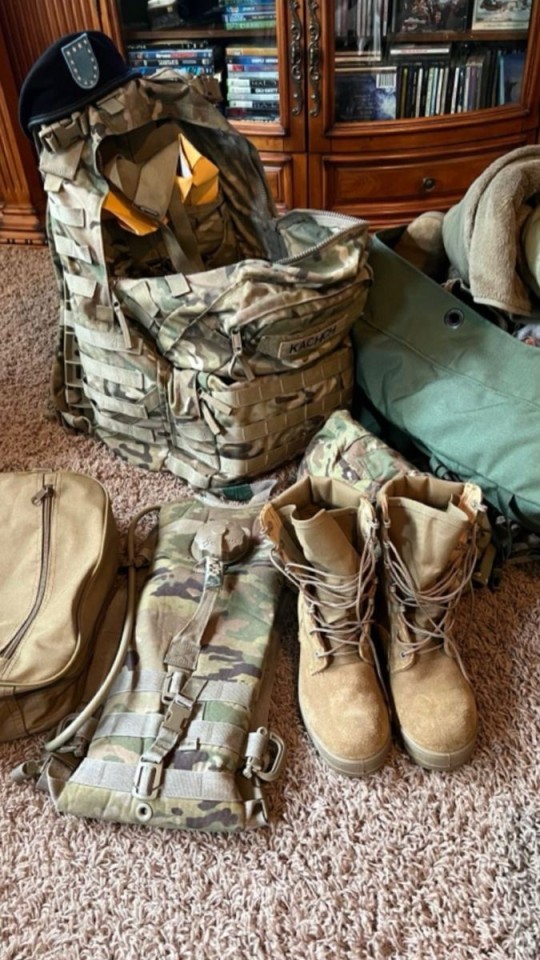
The soldiers will not be going into any situation without equipment - at least, not at first. Equipment is like gold dust in the field, especially if a unit is within enemy territory or the supply chain cannot be relied upon. Soldiers may often turn to thievery in order to resupply themselves with ammunition, weapons, supplies and even boots. In WWII, the newly formed company the Special Air Service - the SAS - actually raided their allies for supplies.
The soldier would carry essential supplies when they are first deployed. These would include (may vary):
Flasks/Canteen: Or some sort of drinking container. A soldier will need to hydrate if they don't wish to die-dydrate on a long march. They may also carry water purification chemicals such as iodine.
First Aid Kits: All soldiers will carry the basics of a first aid kit. This would include bandages, gauze, burn ointment, tourniquet, pain relief (not the good stuff), scissors and tweezers.
Knife: It is always handy to have something to cut things with.
Gun Cleaning Tools: Soldiers will have the equipment to care for their weapons. An uncared for weapon is an invitation for death.
Ammunition: A soldier would carry ammunition with them.
Entrenching Equipment: Something to dig with, usually a collapsible shovel.
Rations: Soldiers may often carry some sort of food with them, usually of the preserved kind.
Some form of shelter: Soldiers may carry something to shelter themselves such as a sleeping bag, a tent, a blanket.
Signal Mirror: Soldiers carry signal mirrors to send visual signals to communicate with others.
Toiletries: Basic hygiene items.
Weaponry
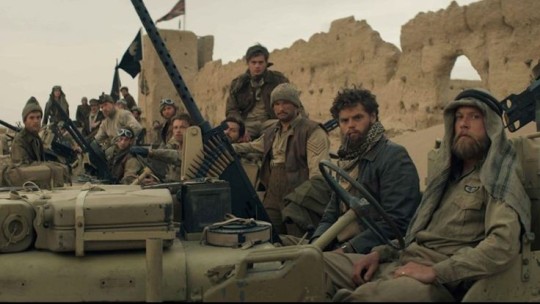
Soldiers will not only just need equipment to survive on the field. Soldiers will carry all sorts of weapons on them. It was up to the soldier to care for the weapon and ensure it is up to scratch. Ammunition, of course, doesn’t grow on trees and nor do weapons. Weapons and ammunition like supply I mentioned above could often be “liberated” from the enemy or even unwitting allies. Every soldier will carry:
A rifle: This is the long-range weapon carried by almost all soldiers. They will use this in combat, especially if fighting from a fixed position.
A handgun or a pistol: Most soldiers will carry a secondary gun. These guns are useful in tight spaces or close combat.
Bayonet: A knife or blade that is attached to the rifle. This allows a soldier to stab the enemy with their rifle.
Combat Knife: A knife used in combat.
Mortar: This is a short-barrelled artillery piece. It is used to fire shells at steep angles.
Hand Grenades: These are handheld explosives carried by soldiers. They have a delayed fuse, meaning that they are useful as both a long-range weapon and as a close-range weapon – one could leave one behind as a present. They are typically activated by pulling the pin, flinging it away from the body, toward the enemy and denoted.
Uniforms

Above in rankings, we went through the insignia which is the symbols on one's uniform that denotes your rank and place in the hierarchy of things. Soldiers will be inspected every day to ensure their uniforms are up to standard and will face the wrath of superiors if their uniforms are unkempt and their appearance not up to the mark. Every private learns how to shine their own boots, sort out their own uniforms and are responsible for looking their best. There are different kinds of uniform for a soldier.
Casual Uniform: This uniform is comprised of a more casual uniform, made up of a tunic/shirt, trousers and boots. Certain units will wear caps and berets denoting their unit and rank as well. Combat Uniform: This is worn on the field. It will often reflect the climate the soldier is going into, so will be light and heavy depending on the weather. A soldier would wear a combat jacket, trousers, wear a helmet, wear their identification tags/dog tags. These would be in mute colours, usually khaki or camouflage. Service Dress Uniform: This is worn during official duties and formal events. It comprises of a dress shirt, tie, peaked cap/beret, creased trousers and a jacket with their insignia, unit symbols and medals. Dress Uniform: This is worn during very formal ceremonies. A formal jacket pinned with ribbons, embroidered insignia and the medals of their achievements and commendations, creased trousers, dress shirt and tie, polished shoes and a formal hat cap/beret.
Life of a soldier (On Base and in the Field)
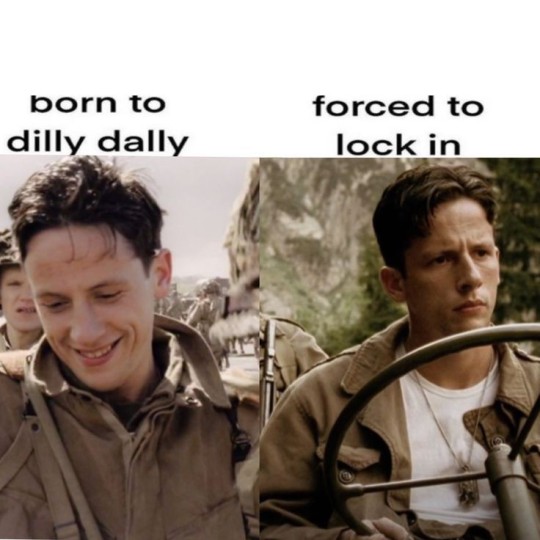
Soldiers on active duty will be expected to manage many tasks, not just firing at the enemy or storming enemy beaches. Soldiers are expected to fulfil maintenance work, defence, offence, administrative duties (if needed), engineering and communications.
On Base: A soldier’s day will be planned right down to the second. They will get up at a certain time, have an allotted time to get ready and tidy up their bunk, report to various drills and participate and have a list of duties to undertake within the day. These duties involve maintenance on base, helping with any office work, guarding and patrolling, doing specialised tasks such as helping in the infirmary. Most privates will do the grunt work, anything hands on or labour intensive while officers will see to training soldiers or paperwork or supply management.
In the Field: The life of a soldier in the field wasn’t as regimented as on base – it can’t be, since most soldiers won’t have the exact same day especially in battle or marching from place to place. But every soldier will have certain duties to undertake. Of course, fighting will be included, some soldiers would take it in shifts to man a fixed position or to engage the enemy or to participate in missions into new or enemy territory. Soldiers would take their place “out on the line”, patrolling the edges of their camp to ensure they can’t be crept up on. Soldiers will erect camp every night they aren’t marching which includes the putting up of tents, digging of latrine pits, building fortifications. Soldiers not out on the line or engaging the enemy will spend their time at camp either helping in the mess hall, in the infirmary or keeping the camp ship-shape. Soldiers may often be sent out to “forage” (*cough, cough* steal) whatever they need such as food.
The Realities of the Army
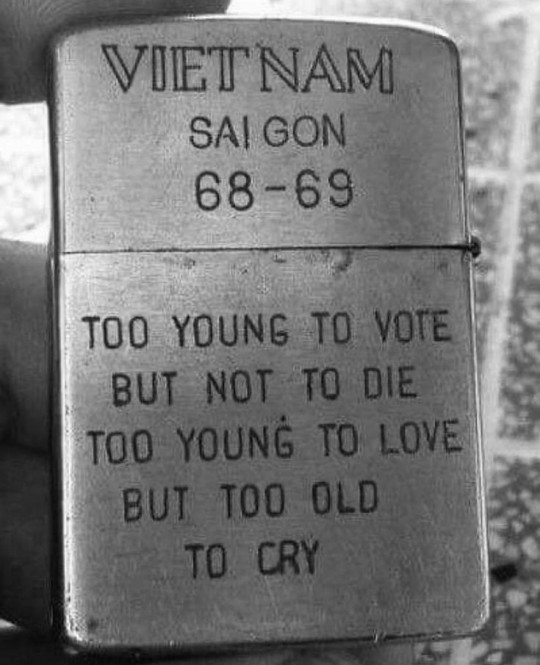
Good vs Evil. Yes, sometimes the army are the heroes. But in reality, war is a grey area. No army in the world is wholly bad or innocent. Every single army on earth has committed war crimes and every army has had to make decisions which some would find morally reprehensible. The point is that painting an army as the good guys or the bad guys in your narrative can’t work because it isn’t realistic. You can of course highlight these issues by the actions of a few soldiers while still retaining the antagonists and the heroes. You can of course pit the ideals of both sides in a war together, to firmly push your reader toward the good guys vs the bad guys. But the reality is a simple one: all armies kill, all armies steal and all armies destroy.
Civilian vs Soldier: The Reality Civilians suffer at the hands of their own army as well as the enemy. Civilians often had to deal with soldiers taking their crops, livestock and overtaking their homes in searches for food, shelter and resources. Enemy civilians would also put up with pillaging, looting and in some cases death, assault and sexual abuse. It is of course against protocol to harm civilians but things do happen in theatres of war.
The Army vs the Soldier
While the army expects a lot out of the soldier as an induvial, the army can often fall short of their duties to that soldier. This can be unintentional, for example supplies can get lost or stolen. But there are instances where soldiers and their needs are sacrificed for the greater good. They maybe passed over for supplies or reinforcements for another unit. They may be placed in difficult circumstances without any hope of relief. They may not have the equipment needed to fight their battle or stay alive. Sometimes, armies even shot their own soldiers for insubordination, ex. In WW1, many soldiers on all sides were shot by their own for “cowardice” – this may have been the case, but some cases involved soldiers who were suffering from PTSD.
Choice vs Obligation vs Threat Why do soldiers fight? What makes somebody join the army? Sometimes it is the search of opportunity, of a place, of rank and a purpose. But sometimes, going to war isn’t the choice of the soldier. Drafts and conscription make military service compulsory for certain age groups and genders. In peacetime, soldiers are enlisted voluntarily in most armies while some countries have compulsory service time even in times of peace. In some wars, criminals in prison were offered the chance to serve in the war as penance for their crimes. There are of course instances when one is threatened or forced into an armed force.
The Effects of War on the Soldier War changes people. The things soldiers see and have to do within war and training will inevitably change them as people. Sometimes, the change is positive, the army has been named by many people as the thing that straightened them out and have them structure. The army sometimes allows soldiers to travel and gain access to opportunities and education that they may never have had access to before. But undeniably, war has negatives effects on soldiers and civilians. Soldiers may suffer from PTSD, depression, suicidal thoughts and feel a disconnect between themselves and their old lives. Soldiers often find it hard to return to their life after the war, especially in radically different settings with people who don’t understand what they have been through. This can lead to substance abuse issues, alcoholism, problems with the law and troubles within relationships among family and romantic partners. Soldiers of course can get injuries while in war or even in training. Loss of limbs, damage to the brain and other organs, broken bones, burns, shrapnel injuries and of course gunshot wounds are all common. Soldiers often get ill while in the field, such illnesses including typhoid, hypothermia, trench foot, dysentery, malaria, pneumonia etc. These are caused by the close living quarters and the often-sub-standard living conditions. Soldiers would often be at risk for pests such as lice and fleas because of their living conditions. Soldiers may often face problems with nutrition, might suffer from dehydration and starvation especially if supplies are scarce.
The Geneva Convention
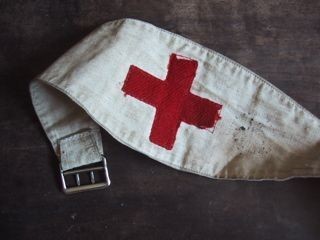
Your world may not include the Geneva Convention, may pre-date the Geneva Convention or Geneva may not be a place within your WIP, but I include this here so you might have a fair idea about the “rules” of modern warfare. This is just a brief version.
Medical personnel are not to be specifically targeted in operations.
Medical facilities and equipment is not be targeted in operations
Any wounded soldiers or civilians are to be treated, despite allegiance.
Prisoners cannot be tortured or harmed in any way
Prisoners must be fed, well-kept and treated for any injury
Prisoners are not under obligation to tell their captors anything but their name, rank and other personal information – this is so they can be recorded and all information must be recorded and sent to the captured soldier's officers
Prisoners must be allowed to communicate with family and friends.
Prisoners have the right to receive any packages or mail.
Prisoners have the right to access the services of the Red Cross, who cannot be prevented from visiting and inspecting them
Prisoners who are seriously wounded or ill must be released
Any religious figures are to be captured and released as soon as possible
Soldiers cannot take hostages, they cannot pillage, they cannot take slaves.
Soldiers must abstain from humiliating and degrading any captured soldiers or civilians.
Reprisals against civilians and other soldiers are forbidden.
Group punishment is not permitted (Yes, that one teacher did break the Geneva Convention)
Prisoners can be tried by their captors, but they are entitled to a fair trial.
All POWs shall be released at the end of conflict
At sea, hospital ships cannot engage in war.
Any shipwrecked crew on a ship must be rescued despite allegiance.
Children, pregnant women, mothers with very young children, the elderly, the sick and wounded who are imprisoned for a long time, must be released as soon as possible.
Surrendering soldiers, civilians and civilians who participate in acts against an army cannot be harmed and must be taken alive.
The use of weapons to cause suffering, say a non-fatal wound or mutilation is prohibited.
It outlaws indiscriminate attacks on civilian populations and destruction of food, water and other materials needed for survival.
The destruction of resources that could affect the population such as poisoning the water supply is not permitted.
Certain infrastructure cannot be destroyed or targeted. This includes dams and nuclear stations. Cultural landmarks and religious landmarks are also to be spared.
Recruitment of children into the armed forces is prohibited.
The use of certain symbols such as the Red Cross in order to deceive the enemy is prohibited.
Civilians who do not take part in combat are to be treated respectfully. They are protected from violence from soldiers.
Children and vulnerable people are top-priority to be evacuated to safe havens as soon as possible. All efforts will be made to reunite them with family.
The targeting of civilians and anything that sustains their well-being such as food sources is prohibited.
Military Terminology

This is by no means a full list but these are the most commonly used terms.
Boots on the ground – to physically be in a location
Inspection - a superior officer takes formal note of appearance, condition of living area and weapons.
Drill – a practise in various manoeuvres, marches, procedures
Pass - leave to have some free time, sometimes off base.
Off base - away from military barracks
Tour of duty – the period of time which an action is completed in.
Civvies – Civilian clothing
Detail - a specific task undertaken by a unit or soldier
Mess hall - dining facility
Latrine - toilet
Latrine duty - digging a Latrine pit or cleaning the facility
Flanking - Attacking an enemy formation from the sides
Envelopment - surrounding the enemy from multiple sides
Penetration - breaking past the enemy’s front lines
Reconnaissance by Fire - Firing at positions that may be occupied by the enemy to provoke them into returning fire (so you know where they are)
Ambush - Attacking from concealed position
Retreat - go back the way you came (DO NOT COLLECT €200)
Feigned Retreat - Pretending to retreat and then attacking the enemy
Perimeter - boundary of fortified area
No Man's Land - the space between front lines
Contact line - where opposing sides meet to fight
Supply line - the route the supplies get from base to the field.
Front line - the furthest out troops are place on the line, this is where the most intense fighting happens
Barracks - sleeping quarters in base
Foxhole - a dug position in the ground
Combatant: A person actively engaged in fighting.
Non-combatant: A person not engaged in a conflict.
Civilian: Somebody who is not a member of any military unit.
Militia: Civilians who are armed and trained to fight.
Guerrilla: Small, independent units that takes up arms against an armed force. Very effective.
Saboteur: Somebody who deliberately sabotages equipment and supplies.
Spy: Somebody who gathers information about the enemy.
Operative: A soldier who carries out a specific task.
Mercenary: A soldier for hire
Contractor: A person or a group of people who are hired to provide advice, services and additional support to the army and their operations.
Conscription: Compulsory enlistment.
Enlistment: Joining the army.
Exercise: Simulated military practises or manoeuvres for training.
War game: Simulated war fare for training.
Mission: The operation.
Objective/Target: The objective of the mission.
Campaign: Multiple operations.
Down Range – being within the combat zone
In-Country – being within in a war zone
Quarters – can mean one of two things either it is a medic's order to stay in the camp or barracks or military family housing.
Squared away - to fix
Siege: Where one army sits outside a fortified town or position and tries to claim it.
Convoy: A large group of vehicles such as trucks, jeeps and tanks travel together. It is harder to target more than one vehicle.
Escort: More vehicles and soldiers who accompany a convoy.
Strike/Assault: Attacking the enemy.
Counterattack: An attack to respond to a previous attack
Rear: Behind the formation
Front: Before the formation.
Line: The formation.
Column: The formation in a line.
Formation: The arrangement of soldiers
Deployment: Soldiers moving to a position.
Redeployment: Sending soldiers to another position.
Mobilization: Readying soldiers, their supplies and equipment for deployment.
Demobilization: The disbanding of soldiers after an operation.
Reserve: Soldiers and equipment held back. This is usually to conserve soldiers and supplies for emergencies or shortages.
Reinforcement: More soldiers and equipment sent to the soldiers on the line to bulster their efforts.
Casualty: Death, injury, missing.
KIA: Killed in action.
MIA: Missing in action.
Surrender: Yielding to the enemy.
Ceasefire: An agreement to cease hostilities.
Armistice: A temporary stay of fighting.
Battalion: A large unit of soldiers. Usually in the range of 300 upwards to 800 or so soldiers.
Regiment: A unit made up of several battalions.
Division: A military unit (10,000-20,000)
Corps: A unit, (20,000-50,000)
Theatre: The place where military operations are undertaken.
Engagement: A battle or a conflict with the enemy.
Manoeuvre: Planned movement.
Logistics: The planning of moving soldiers and equipment to soldiers.
Ordnance: Supplies.
Artillery: Large-calibre firearms.
Infantry: Soldiers who fight on foot.
Reconnaissance: Gaining information about the enemy and their positions.
Tactical: Planning and implementation the military strategies.
Strategic: Planning and directing strategies.
Operational: The following through of military operations.
Command/Control: The authority to direct military operations.
Communications: The passing of information between units, base and HQ.
HQ: Head Quarters
Intelligence: Information about the enemy
Counterintelligence: Preventing the enemy from gaining information about the army, such as the famous Operation Mincemeat.
Camouflage: The use of material or paint to hide oneself from one’s enemy.
Fortification: Defensive structure
Entrenchment: Digging trenches or foxholes.
Garrison: Military station.
Bivouac: A temporary camp, but this camp is without no cover. This means no tents or shelter.
Dog Tags - Metal identification tags worn by soldiers
Patrol: Soldiers will leave camp or their positions to walk within their boundaries
Raid: Attacking on the enemy’s position.
Zero Dark Thirty - Early as fuck, from 0100 hrs to sunrise.
Copy - I understand
Unit - can mean any organisation in the military
Platoon - a section within a company made up of 30-50 soldiers
Contact - Engaging with the enemy
Tactically Acquired - Stolen
Squad - a smaller faction of a company
CO - Commanding officer
XO - second in command
Hang Fire - wait for the next set of orders
Demilitarized Zone - a place that is no go for military equipment, weapons and soldiers
AWOL - Absent without leave
PT - Physical Training
Skivvies - ones undergarments
Active Duty - Full time duty in active service
As You Were - Go back doing whatever you were doing or standing how you were standing
BOLO - Be on the Lookout
CP - checkpoint
Bunk - Bed
Ruck - backpack
Smoked - physical punishment for an infraction.
Zone of Action - a specific part of the tactical area.
About face - a manoeuvre where a someone or a group turn to face the opposite direction.
POW - Prisoner of War
POW Camp - facility to house POWs
Halt - stop marching/moving
Present Arms - salute, typically by presenting one's weapon or raising the right hand to the forehead
Parade Rest - stand with one's feet shoulder-width apart, hands folded behind their back
Fall out - break formation
Fall in - get into formation
At ease - stand in a more relaxed position
Attention - stand upright, heels together, back straight, shoulders back, arms at the sides.
Books and Media I recommend
Band of Brothers (HBO, Limited Series)
Beyond Band of Brothers by Dick Winters
Band of Brothers by Stephen Ambrose
M*A*S*H
The Unwomanly Face of War by Svetlana Alexievich
Lady Death: The Memoirs of Stalin's Sniper by Lyudmila Pavlichenko
The Six Triple Eight
Some Desperate Glory: The First World War the Poets Knew by Max Egremont
Poems of the Great War 1914-18
Poems of the Great War by Wilfred Owen
Poems of the Great War by Siegfried Sassoon
Poems of the Great War by Robert Graves
Poems of the Great War by Rupert Brooke
Poems of the Great War by David Jones
SAS Rogue Heroes (BBC)
SAS: Rogue Heroes: The Authorised Wartime History by Ben MacIntyre
Saving Private Ryan
All Quiet on the Western Front by Erich Maria Remarque
All Quiet on the Western Front
Private Peaceful by Michael Mupurgo
War Horse by Michael Mupurgo
Road to War by Valerie Wilding
The Trenches by Jim Elderidge
D-Day by Byran Perett
D-Day by Ben MacIntyre
Japan's Pacific War by Peter Williams
Operation Mincemeat by Ben MacIntyre
War Nurse by Sue Reid
Helmet for my Pillow by Robert Leckie
With the Old Breed by Eugene B Sledge
Hacksaw Ridge
D-Day Through German Eyes: How the Wehrmacht Lost France by Jonathan Trigg
Platoon
Britain’s Secret Defences: Civilian saboteurs, spies and assassins during the Second World War by Andrew Chatterton
If You're Reading This...: Last Letters from the Front Line by Sian Price
A Bridge Too Far
Firepower in Limited War by Robert Scales
Storm of Steel by Ernst Jünger
Dunkirk
The Things They Cannot Say: Stories Soldiers Won't Tell You About What They've Seen, Done or Failed to Do in War by Kevin Sites
1917
On Artillery by Bruce Gudmundsson
Letters From Iwo Jima
Das Boot
The Longest Day
Come and See
War Horse
#Yes this is long#I am not sorry you asked for this post and I delivered#I shall rest now#and yes I am aware there are some gaps in my military knowledge but I did my best#writing#writeblr#writing resources#writing reference#ask answered#writer#writing advice#spilled words#writer's problems#writer's life#Fantasy guide#fantasy guide to the army#the army#writer's guide#writer's help#writing resource#writer reference#writer resource#writing hep#writing guide#writers#creative writing#wtwcommunity
399 notes
·
View notes
Text
I sent out Christmas cards to friends and family, and some part of me is still (a good 48 hours after dropping them in the mailbox) conflicted over it. It feels....attention-seeking? needy? some other too-easily-bruised emotion, that goes hand in hand with the couple of paragraphs I wrote summarizing my year. As though reminding people who aren't constantly in my eyeline how I spent 2024 is something vaguely embarrassing and just....too much.
And I know objectively, there's no harm in sending these. Worst case scenario, someone gets it, complains with their partner about Why did we even get this? Oh, that Sarah, she's always been a sentimental idiot, and then throws it in the trash. Best case scenario, the people who are not great about remembering I exist text me, or mention it when I see them at Christmas---Oh, hey, got your note!
Yet here I am on a Saturday morning muttering, Someone has to go first, like it's a talisman that will protect me from my own imagined shame. Truly, being a human being is very silly.
#no one has received one yet! it's ridiculous; and yet here I am.#like when your tooth falls out and you can't stop running your tongue over the gap. except with useless shame.#christmas for ts#celestial emporium of benevolent knowledge
173 notes
·
View notes
Text
tfone au where OP is created as the last of the primes but way after them, a sparkling born at what were thought to be the last days of the war against the quintessons, the beginning of a new generation of peace after eons of war. a child meant to be loved and raised knowing nothing of war nor sacrifice.
he's kept mostly out of the spotlight by his siblings, who don't wish to expose him to everyone's optics so young, and want to wait until the war is done and over to properly introduce him to their people.
except of course the primes are betrayed and murdered by sentinel, the war is lost and everyone who knows and cared for the truth is either banished or outright killed in order to suppress it.
and the high guard, the ones the primes trusted the most, the ones that were supposed to protect them, the ones who failed in their most important duty, have to make a choice. to take the last prime, their last hope, with them to the surface, a hostile environment where there's little to no supplies and where they'll be hunted down by both sentinel and the quintessons as the biggest threat to their regimen.
or hide him in plain sight. place him where sentinel won't think to look for him. one more sparkling among many. and hope it will be enough to keep him alive. pray to primus that he'll protect his last child long enough for them to come back for him when it's safer (even if most of them have already lost their faith on him when he allowed the rest of his children to be massacred like that)
they almost lose their resolve when they realize they will have to take the little one's cog away in order to make him blend in with the rest of the newborns (and oh do they burn with murderous intent when they see what sentinel has done to their people but it's not the time yet-) but in the end they decide an impaired little prime is better than a dead one.
and so in the chaos of thirteen dead primes and a sudden energon crisis, a little sparkling who very few mechs really knew about and even fewer had seen completely vanishes. and in the depths of iacon a mech in charge of a new batch of newborns scratches their helm in confusion as they realize they must have miscounted the first time.
optimus prime is quietly erased from any official records by sentinel, written off as dead when they find a sparkling's frame mangled beyond recognition after an attack on the base of those rebels that insist on being a thorn on his side. killing the sparkling hadn't been precisely in his plans, he probably could've found some use for it after all, but he's not particularly upset about it either.
and orion pax grows up with an ache on his spark that tells him he's missing something far more important than a t-cog and dreams of gentle and loving hands, cradling him against the frames of mechs he cannot recall the faces of.
#i talk a lot <3#transformers#transformers one#tfone#optimus prime#orion pax#baby prime orion au#this is mostly an excuse for me to draw the primes and baby OP later on. just to be clear.#i WILL be drawing this at some point lmao#tbh i'm a little uncertain how i want things to progress#because on one hand it would be very tasty and tense if sentinel recognized optimus during the race#but that means a lot of changes very early on in the plot and i would have to do a lot of Thinking on how to justify getting the gang#to still pick up bee and elita. cause i love them <3#i do think it'd be very funny if the high guard's plan worked like a charm except for the very tiny fact that they didn't count#on orion being an absolute hellion. like. this kid is Not Going Unnoticed and it's completely his own fault lmao#in this version maybe a member of the high guard stayed behind to keep an eye on orion and is able to get them out before they're killed#but instead of taking them to where the primes fell they take them directly to the high guard#which is very awkward because it's a very moving and emotional moment for the high guard who are finally reunited with their little prime#all grown up and healthy and blessedly *alive*. except orion doesn't fucking remember any of them and is very confused as to why#the legendary warriors of cybertron are getting all weepy over him. they finally explain the truth to him which is a Fucking Bomb#to drop on anyone but especially a group of kids who almost got killed by the person they all thought the world of just hours ago#they also return orion's t-cog to him which would create some tension between him and the rest of the gang because this time#he's the only one getting his cog back. add to it that they were just told he's the equivalent of a demi-god and... well.#there's a gap between him and them that wasn't there before#on the other version of events that follows canon more closely everything goes the same up until the gang finds the primes in the cave#and wake up alpha trion who now not only has to deal with the fact the rest of his siblings are dead but that he missed fifty cycles#of his baby brother's life. that the only sibling he has left does not remember him or his true identity at all.#he has to choose between telling him the truth which has the risk of unbalancing him in a critical moment where he cannot afford to#be distracted because they're being hunted down. or let him remain unaware. let him forget their family and the love they had for him#but letting him remain free of the knowledge of what he lost and the heartbreak it would bring.
321 notes
·
View notes
Note
Could you draw some cowboy Patrochilles?
More cowboy content coming up right away anon LOL! Patrochilles are the next victims of my new AU
I do not know enough about cowboys to give the, good enough lore but Achilles is probably good at cowboying whatever they do LMAO

#there is a deep gap of knowledge here#anyways#enjoy the cowboy gays#patrochilles#patroclus#achilles#deadbaguettesart#deadbaguettesask
368 notes
·
View notes
Text
Sauron, Galadriel, & Tolkien's Theology of Repentance - Part One

Summary: Character meta analysis on Sauron (and Galadriel, through the lens of Sauron). Based on both Silmarillion & RoP canon. 3.5k words. Discussion of Catholic theology involved. Blanket TW for discussion of violence, manipulation, etc., because Sauron. Spoilers for S1 & S2 and the Silmarillion, of course. The tragedy of Sauron is that he gets offered so many legitimate chances at redemption and forgiveness, and he denies them every single time. But we know he wants absolution, because that’s what he sees Galadriel as: his chance to bind himself back to the light, to be Mairon again, to heal the pain that he caused and that was caused to him under Morgoth. But because he has such a warped view of himself and his actions, he dismisses genuine extensions of compassion, forgiveness, and care as simultaneously beneath him and too good for him. And yet, he still pursues redemption, but through none of the channels offered to him.

In The Rings of Power, he’s given the explicit instruction to change for the good in the village after he’s reborn. He’s given the chance leave his past behind and work meaningfully in Númenor. He’s given the chance to redeem himself by Galadriel's offer of friendship (or love, depending on your interpretation). In the Silmarillion, he's even given the chance by Eönwë himself, and comes close to leaving Morgoth behind completely!
Let's look at this passage from Of the Rings of Power and the Third Age (emphasis mine):
When Thangorodrim was broken and Morgoth overthrown, Sauron put on his fair hue again and did obeisance to Eönwë the herald of Manwë, and abjured all his evil deeds. And some hold that this was not at first falsely done, but that Sauron in truth repented, if only out of fear, being dismayed by the fall of Morgoth and the great wrath of the Lords of the West. But it was not in the power of Eönwë to pardon those of his own order, and he commanded Sauron to return to Aman and there receive the judgement of Manwë. Then Sauron was ashamed, and he was unwilling to return in humiliation to receive from the Valar a sentence, it might be, of long servitude in proof of his good faith; for under Morgoth his power had been great. Therefore when Eönwë departed he hid himself in Middle-earth; and he fell back into evil, for the bonds that Morgoth had laid upon him were very strong.
This passage is clear that Eönwë is willing to pardon Sauron--he simply did not posses the power to do so. But when Sauron was told he must appeal directly Manwë, he gave up entirely and skulked back to Middle-earth. There are a few ways to read this:
1. He was not wholly repentant
Sauron simply wanted the protection of a new master in the absence of Melkor. i.e., he was rather fickle and simply wanted to be on whatever the "winning" side was. This is supported by the text literally saying that at least some of his obeisance was completely false, and that he only made a point of feeling bad about anything once his master had been chucked into the Void and his armies and strongholds were being destroyed (Thangorodrim). In this reading, perhaps Eönwë saw Sauron's treachery and referred him to Manwë knowing that it would be a test of his true intent. However, while a valid interpretation, I believe this to be the less holistic of the two.
2. He was truly repentant
Sauron did truly feel badly and "abjured all his evil deeds," but he was unwilling/unable to humble himself after being so fundamentally broken by Melkor and developing an insatiable power lust (hey, he isn't defined in the narrative by lust and pride for nothing).
Earlier in this same chapter, Tolkien wrote that Sauron could "...deceive all but the most wary." This is in the specific context of his physical shapeshifting. But, I would argue that this can also be tied to his lies. Tolkien has a specific ethic of beauty, where physical perfection is equated with moral goodness. Sauron completely inverts what is otherwise a hard and fast rule within Tolkien's writings by being the character most frequently described as "fair"--seven times to Lúthien's six, and she was the most beautiful woman to have ever lived!
(Side note: I have another post on Tolkien & beauty in the works where I'll get more into this idea)
Why does this matter? Even though this interaction with Eönwë takes place in the First Age, Sauron could at this point be in the demonic form Mirdania describes in the forge. And, I am inclined to believe that Eönwë, as the head Maiar and herald of Manwë, would be a pretty wary guy, and thus able to sense any of Sauron's trickery. I read this to mean that Eönwë looked at Sauron and saw his potential to be Mairon again, either in absence of his evil form or in spite of it.

Because Sauron is incredibly beautiful. And even if it is a disguise of the true, depreciated form of his spiritual essence, he presented himself to Eönwë at his most beautiful. He wanted, even in his act of repentance, to make himself more favorable in Eönwë's eyes. To show up as Mairon (who was likely close friends with Eönwë before everything went down, since they are considered to be two of the most powerful Maia and would have worked closely together).
But I don't think this was all manipulation on Sauron's end. I agree with the scholars mentioned in the text who believed that Sauron was truly repentant--which is why Eönwë even bothered referring him to Manwë instead of kicking him into the Void with Melkor.
And this is the tragedy: Sauron is told exactly how to repent, and believes fundamentally that it is an impossible path for him. And yet, he still longs so intrinsically for it! He was, under Aulë, a Maia of precision, perfection, and order. Under Morgoth, he feels disordered, dis-regulated. He needs to correct the fundamental imbalance within him, so why does he flee Eönwë?
It comes back to Sauron's pride.

If he follows through with this path of reconciliation, there is no way he can hide or pretend his actions away. If he cannot trick his fellow Maiar, he certainly cannot trick the Valar. And he cannot stand the idea of submitting himself back under their rule, especially now that he has tasted power. This is a pride wound; it is why the idea of confessing to Manwë would be humiliating to him as opposed to just upsetting/uncomfortable.
Again, the pivotal moment: he is told how to make amends for crimes and determines that he cannot do it. So he returns to Middle-earth and stews in his own self-hated and self-pity for a few years. In that time, he consciously or subconsciously latches onto Eönwë's offer--forgiveness from penance. It is the way forward. And if he cannot earn penance at Manwë's hand, he will do it on his own.
The Prodigal Son
This is where we have to talk about the Catholic roots of Tolkien's work for a moment. The scene where Sauron approaches Eönwë mirrors the biblical parable of the prodigal son. In this story, a man abandons his family, spends all his money, and falls into ruin. But when he recognizes his failings and returns to his father to get help, he is welcomed back into the family without question--in other words, he is forgiven and restored to his former position.
17 But when he [the prodigal son] came to himself he said, “How many of my father’s hired hands have bread enough and to spare, but here I am dying of hunger! 18 I will get up and go to my father, and I will say to him, ‘Father, I have sinned against heaven and before you; 19 I am no longer worthy to be called your son; treat me like one of your hired hands.’” 20 So he set off and went to his father. But while he was still far off, his father saw him and was filled with compassion; he ran and put his arms around him and kissed him. - Luke 15:11-32, NRSV CE (emphasis mine)
The parallel is clear; Mairon, the repentant Maia, returns home with hopes of reconciliation. He is prescribed the same task that the prodigal son offered to his father: he must be bound in servitude to his father/creator in order to pay off his debts. This is a deliberate allusion from Tolkien. The story of the prodigal son models the path of reconciliation that Eönwë describes. Tolkien seems to be drawing a line in the sand with this: Sauron is unwilling to do the work required by the Valar for repentance, so he is unable to receive the grace of a warm welcome back into the fold of the Ainur. Since he did not humble himself, he has to be told to do it. And he does not want to! He wants to be loved, but he also wants his power--evidence, in a way, of how his character was fundamentally altered in his time with Morgoth.

His pride--and his fear--cut him off from the potential of grace. He does not know for certain that Manwë would subject him to servitude (though I would argue that it's textually evident that it is a custom), but this assumption leads him to flee, which allows him to slip back into his old ways.
He wants to be Mairon (admirable) again, not Sauron (abhorrent). He wants to be accepted and loved, but not punished. He wants the benefits of reconciliation without the work he would have to do to earn it or the shame he would feel as he did. It's pride, but it's also deep shame--the flip side of his extreme ego is an implicit self-hatred, one that we can see in the subtext of how he speaks about himself and about his time with Morgoth.
Even the language Tolkien uses is heavily shame-coded, especially in a Catholic context; Mairon did not go willingly, he was "seduced." He admits to Celebrimbor that he was "tortured by a god". It becomes exceedingly clear through both text and on-screen canon that Sauron was routinely broken and abused for centuries. This has fundamentally damaged his self-perception, which is ultimately what leads him to "[fall] back into evil"--whether due to pride or shame, he hides, perhaps because he consciously or subconsciously does not believe that he deserves forgiveness, no matter how much he craves it.

Naked in the Garden
His flight back to Middle-earth after meeting Eönwë is reminiscent of another biblical scene, where Adam and Eve, after committing the first sin, hide from God in shame and fear (emphasis mine):
7 Then the eyes of both were opened, and they knew that they were naked...9 But the Lord God called to the man, and said to him, “Where are you?” 10 He said, “I heard the sound of you in the garden, and I was afraid, because I was naked; and I hid myself.” -Genesis 7-10, NRSV CE
The image of nakedness is, here, one of vulnerability, and Tolkien establishes that Sauron fears that which he cannot control. He needs the Rings under his power. He needs his armies and his enemies under his watchful eye. He is petrified of letting his power slip away (possibly due to never wanting to feel powerless in the hands of a Vala, fallen or not, again).
The biblical allusion here hearkens back to the fear Tolkien describes Sauron as feeling regarding his return to the Ainur. In the religious system Tolkien has established, which is likely inspired by his own religious beliefs, Sauron has sinned, and must make penance. But he is afraid of God/Manwë, and does not want to "let go" of his sin. In other words, he is not truly repentant. This reflects the Catholic sacrament of confession, which requires self-reflection and resolve to never commit the sin again.
Instead of shame driving him to contrition, it drives him to isolation.
But he still wants forgiveness. So, in his years of hiding in Middle-earth, he decides to earn it himself. His own way.

Enter the Rings.
Sauron wants to perfect the wrong he wreaked so that he can both earn his way back into the Ainur and keep his power. But what he does not realize is that this does not work. Eönwë is clear that he must forsake his true temptation--absolute power--through penance by submission. Yet Sauron in his pride thinks he can have it all. Sauron is a very carefully controlled villain, and the only times he snaps or makes significant mistakes are when his inflated self-perception is challenged, revealing the self-loathing and/or self-pity underneath. The best example of this is when he kills Celebrimbor prematurely, and cries afterwards. Why? Because Celebrimbor was right about him, and he hates it. He hates knowing that he is nothing more than the Morgoth's shadow, because Morgoth was his master as much as he was his tormentor. As Sauron puts it, his relationship with Morgoth was often defined by pain as a test to see "whose will was the mightier":
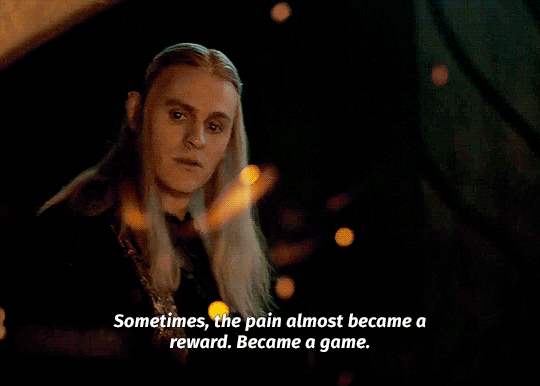
This image carries more shame, both in its implicit sexual connotations and in the simple power dynamic of it. Sauron, even though misguided, is rallying against Morgoth. He wants to break what Morgoth has created and build something new, something better, something apart from his old master entirely. But Celebrimbor confronts him with reality: he has not created something new, and perfect, and special, as he so wanted to--he can only act in imitation, not in generation. And when he got close with the Rings, it cost him everything. It's almost like he wants the power of a Vala, and loathes that he cannot attain it.
And this is why he becomes so singularly obsessed with Galadriel.

She’s his foil. They both crave power and adoration, but in the end of things, she does not fold under his temptation. She turns down everything she has ever wanted for the greater good and for the sake of her own soul. Sauron looks at Galadriel and perceives that she would have succeeded at Eönwë's test because she is willing and able to humble herself. This maddens him to the point of both desiring her and desiring to break her.
She learns that she is easily tempted and becomes strong enough to handle it (through a lot of tough love from Elrond & co.). She has to learn how to do it, but she is able to.
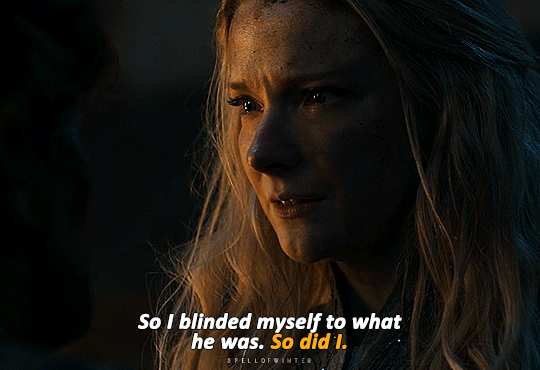

She grows from someone who resisted and rejected authority to someone who is trusted as an authority because of her ability to wield it wisely (see: Gil-galad allowing her to answer for him in 2x08).
In other words, she earns the trust, love, and support of her community. Sauron has to force his to comply—it is an illusion of love.
His possessive obsession with her also stems from her fairness. She was the object of her uncle Fëanor's obsessive desire for creation as well. Her hair was the inspiration of the Silmarils (see: The History of Galadriel and Celeborn; The Shibboleth of Fëanor - source with page #s here), which Morgoth desired more than anything to possess.
Sauron, wanting to spite his master, wants one better--to own that which inspired the Silmarils, to own the image of fairness (and thus of moral good) completely. This is why he wants to bind himself to her. This is why he needs her. He sees Galadriel as his mechanism of repentance, and his last triumph over Morgoth. Winning her is his salvation as much as it is proving that his will is the mightier. It is his way of dominating Morgoth. This starts, I think, as a genuine effort at proving himself to the Valar, but quickly consumes him entirely. He is overcome with the desire for revenge, just as Galadriel was at the beginning of the First Age.
And he sees this in her. Sees their similarities. Sees that she, too, is angry and lonely and so afraid of losing her power. And he leverages that to befriend her. This is where it gets ambiguous and you can read RoP as either painting the image of Sauron being earnest but completely misguided in his proposal, or you can see it as him being entirely manipulative.
I think the truth of that scene probably falls somewhere in the middle; just like when he presents himself to Eönwë, he is sincere in his desire, but only knows how to present it in an inherently contriving way. He does want to bind her to him, so he tries to only reveal to her the good aspect of that desire (and also of his desire for power, which he allows her to see because he believes that it is good and also because she understands it), and not the ugly underside of his internal struggle against Morgoth, the Valar, and himself.
And I do think, in his own way, he cared about her. Galadriel consistently shows kindness and compassion to him. In S1, they grow to know each other's minds and souls, and she considers him a close friend. He finds comfort in this, that someone could see the blackness of his heart and care for him anyway. He thought, in his isolation, that he lost that chance when he fled back to Middle-earth. And here is the very picture of the light itself telling him that she supports him, that she sees the good in him, that she wants to help him set the world to rights! Of course he is infatuated by this. Of course he also wants to use it. He is Sauron.
But Galadriel succeeds where he fails, so he stops playing nice and tries to forcibly drag her down with him. First, by baiting her with the image of the man she cared deeply for:
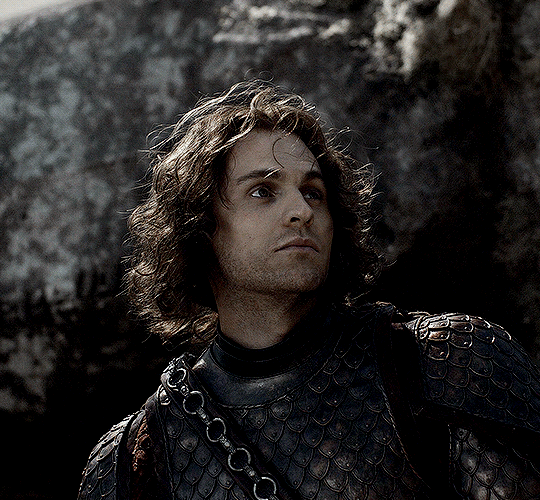
Then, by reminding her of all she is losing by rejecting him:

And she is still strong enough to say no. And not just to say no, but to shut the door completely. To look in the face of everything she has desired for centuries and turn it down, understanding that it will ruin her. Yes, she hesitates. Yes, she still wants it (wants him). But she wins the day by holding fast to the light that Sauron wishes so badly to bind himself to.
Because she has lost everything--her brother, her husband, the station as commander, the trust of her high king and best friend--and earns it back only through her resistance of her greatest temptation. It is a struggle, it is painful, it nearly kills her--but she does it. She wins the test that Sauron could not even bear to face.

In their headlong, self-sacrificial tendencies, they are the same. Both view themselves as fundamentally stronger/better than their peers while also being deeply lonely due to their self-imposed isolation (Galadriel's laser-focused hunt for revenge, Sauron's exile in Middle-earth). But to Galadriel, the light is more important than her pride.
For Sauron, the light is his source of pride. He desires it more than anything, but condemns himself to never being able to touch it due to his rejection of Eönwë's offer. Paradoxically, he tries to grasp at it through Galadriel, the living silmaril, and succeeds only in darkening her. We learn from Gil-galad in 2x08 that his crown piercing her flesh in an act of brutal domination nearly strips her soul from her and pitches it into the unseen world. In this, Sauron is saying: If I cannot have you, I will force you to need me. I will break you into loving me.

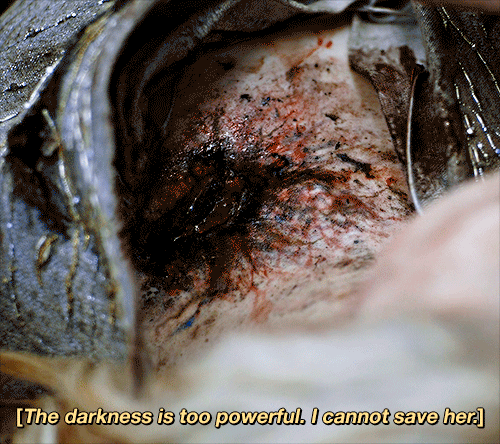
He says this to Celebrimbor as well. He no longer knows how to love properly. He only knows how to inflict pain until this object of his obessive desire needs him--just like how his immortal spirit was broken into submission by Morgoth. And isn't this revealing of his own sense of self? He refuses to suffer the path of light, but willingly suffers the maddening path of darkness because it is a comfortable, familiar suffering. One, he tells Celebrimbor, he even grew to enjoy (2x08). As the path of the Rings drive him madder and madder, his desire for the light (Galadriel) and the return of his power (Celebrimbor) become further disordered and corrupted until they culminate in him destroying them--and his chance at earning/owning them--entirely.

And this is Sauron's ultimate point of no return (which we will hopefully see in S3 🤞). The razing of Eregion and slaying of Celebrimbor were acts of petty rage he committed when his pride was injured. This was the final nail in the coffin. Galadriel, in her rejection of him, ruins what he sees as his true chance for redemption.
Galadriel, now stepping into the role of Eönwë, re-opens the invitation: "Heal yourself!" (2x08). But in rage and shame and stubborn pride, he turns it down again. I believe this is where his desire to heal Middle-earth shifts fundamentally into desire to dominate Middle-earth. He always wanted to rule, but now he wants to own.
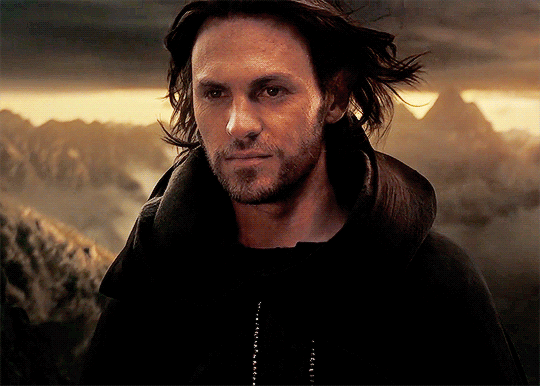
#fae speaks#I spent hours pouring thru the Silm and RoP for this so if you enjoyed please let me know I'd love love love to talk about it more <33#sauron is my favorite freak in all of tolkien's lore rn I want to study him like a bug#btw this is saurondriel (and even silvergifting? if u squint) positive but with loads of nuance. i see haladriel as love and saurondriel as#possession. both are fun in fiction of course but I want to acknowledge how deeply messed up the dynamic is#but also! it's fiction! do whatever you want with it! if you want saurondriel to get a happy ending then do it <3#and send me the fic so i can read it because i'm team half-maia celebrian hehe#also if there are any glaring gaps in my knowledge of the silm pls lemme know it's been a minute since i've read it all the way through#part two will be on beauty and evil in tolkien's cosmology :)#tolkien#the silmarillion#the rings of power#rings of power#trop#rop#sauron#halbrand#annatar#galadriel#sauron x galadriel#saurondriel#haladriel#trop spoilers#trop season 2#trop meta#rop meta#rop theory#trop theory#celebrimbor#my metas
168 notes
·
View notes
Text
I love when Sam is dumb, Dean is lazy, Cas is mean, or Jack is ruthless. It’s like getting your favorite skittle from a bag.
#mostly cause fandom like to either look away from these moments#or rake the characters over the coals for daring stray from the proper path#(ex: dean can’t even watch a horror movie marathon in his room after being possessed by michael Thee Archangel)#cause it’s seen as Wrong#dumb sam is just funny cause he’s savant-like in other areas and it entertains me greatly ex: WHY ARE PLANETS ROUND#literally this is how it can be for hyper-intelligent ppl who have big gaps in knowledge from having a tumultuous upbringing#mean cas is overt... i'm still not sure why ppl think it doesn't count when cas does it it's a little bit hilarious#and ruthless jack is politely looked away from in favor of a nougat toddler stereotype which doesn't even really exist (that's NOT jack!)
102 notes
·
View notes
Text


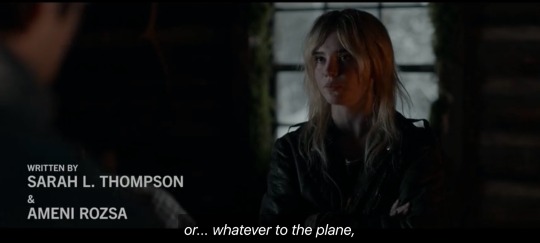

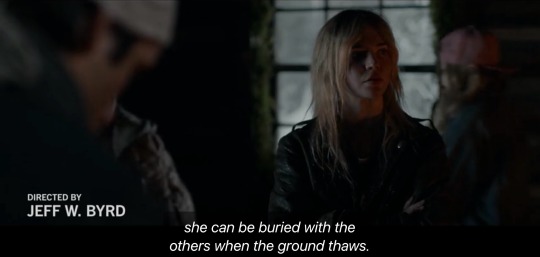
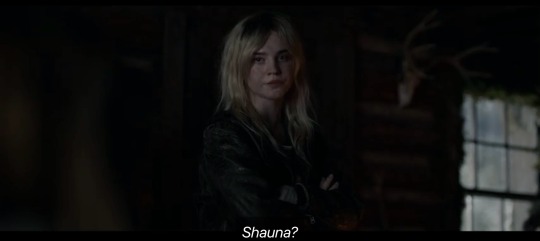
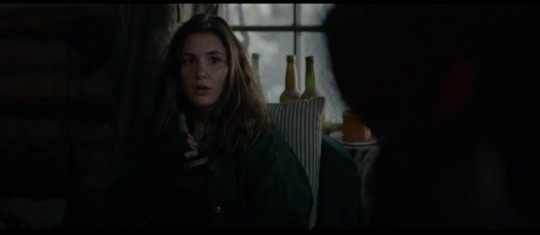
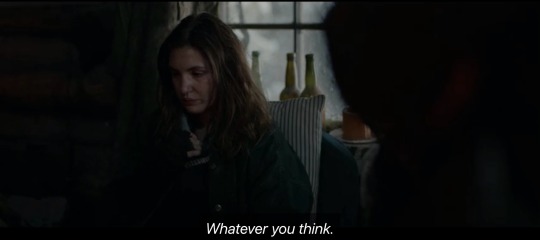
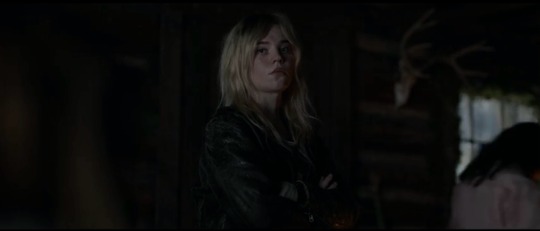
#natalie scatorccio#shauna shipman#shaunanat#shorccio#jackienat#taylorccio#jackieshauna#shackie#jackieshaunanat#shauna x nat#jackie x nat#jackie x shauna#yellowjackets#*#i’m obsessed with this moment. earlier in the episode we see nat sitting outside just staring at jackie’s bones. she’s clearly been thinkin#this over. that they can’t just leave her there. a visual reminder of what they did. making them all feel sick#that jackie deserved better. that in death. even now that she’s just bones. she deserves a burial or something. and nat takes initiative.#comes up with a plan and shares it with the group. but even then she looks to shauna for permission or maybe reassurance? maybe it’s out of#respect. they all remember how shauna reacted when it was initially suggested they get rid of jackie’s body. this is hard on all of them#jackie’s death and what they did. but they all know it’s affecting shauna the most.#maybe nat is even hoping shauna will want to help or that someone else besides natalie is feeling the way she is. that she won’t have to do#this alone. that someone else wants to honor jackie or feels as sick as she does about it. and they clearly do!! so many of them feel that.#i mean maybe only shauna and taissa are feeling it as strongly as she does? but shauna is kind of in shock and sick with guilt and grief an#in no place to meet nat half way here. she’s retreating into herself. and tai doesn’t even remember eating jackie. think she’s still#processing that it even happened. that they all aren’t lying to her. and also dealing with the knowledge that she’s having memory gaps.#dissociating. so nobody that is present there with natalie is feeling the way she is. lottie seems to think it was necessary for their#survival (probably true and nat even tells jackie’s bones as much.) but lottie doesn’t seem to be feeling guilty and when she takes a mug#out to natalie while she’s wrapping the bones. nat seems angry at the way lottie is handling it. and travis offers to go with her but it#reads to me like he is worried about nat specifically and not that he’s feeling that bad about what happened. i think nat is just feeling s#alone in this episode. and the one person that gets that is shauna but she’s just not in an actionable state. just tells nat to take the
75 notes
·
View notes
Text
Nobody including me posts about their ocs enough so please please please reblog reply or whatever with some oc tidbits!
#mutuals I am begging you kindly#I’ll go first! Tango has a massive soft spot for mole rats. hates killing them and thinks that they’re absolutely adorable! they would#rather be electrocuted than to admire that they have feelings though!#Murphy is the second eldest of 5siblings with her twin brother Tom being marginally older#they all look very similar (freckles. light brown hair. tanned#and front teeth gaps) and they have the youngest is tallest / oldest is shortest height variants haha!#they grew up together and stuck together even after the youngest was killed in a battle on Aus soil against fallout china. they all decided#to move to America and enlist (as was common) but we’re all put into seperate squads). the bombs fell and she lost track of her 3 brothers#after the whole being frozen for 210years.. perhaps they are still out there ..#Libby is just over 100 and remembers back when the super mutants actually were an organised threat.. rather than small groups#slick is only an average shot but his tactics are excellent and he has very steady hands as well as enough medical knowledge to be a useful#field doctor! he would much rather be helping than shooting anyway#Thorn is part of tangos timeline/au and because she convinces Kellogg to take her directly to the institute#none of the usual teleporter run around missions happen as well as reunions happening in almost a second time.. that has a lot of#impact on how the story changes for everyone involved!#while nathan is the present time is barely a husk of his former self albeit in a much more dangerous body#he has retains enough of his subconscious memeories to be increasingly dangerous to power armour users.. imagine if when a deathclaw picks#you up it also knows how to operate the release latch rip#typos! ocs tag#typos! tango tag#typos! Murphy tag#typos! Libby tag#typos! slick tag#typos! thorn tag#typos! Nathan tag
96 notes
·
View notes
Text
MASSIVE PSYOP: Weaponizing fear in Women to Repel cohesive relationships with men... (Soft depop)
Its all fun and games until we all die alone..
In my careful observations, it seems clear that women have a noticeable vulnerability in their minds that men don’t typically have. This can be linked to evolutionary needs, which play a role in how humans reproduce within our complex social structures. It makes sense—and here's where it gets even more interesting—that this perceived weakness helps women engage with potential partners without always seeing through men’s hidden intentions, like simply asking for a phone number. This delicate balance highlights the complexity of human relationships and how reproduction works.
Moreover, historical and religious texts, like the Bible, describe women as supportive partners to men, emphasizing their role in nurturing and cooperation. This background fits well with my conclusion that these built-in psychological traits in women are essential to maintaining and continuing humanity within our complicated societies.
Thus, it becomes evident why women are targeted first when a society is being dismantled. Attacking this cornerstone disrupts the family unit, creating chaos and weakening the social fabric critical to society's stability and continuity.
Disrupt this balance and watch society crumble. You Decide 🤔
#pay attention#educate yourselves#educate yourself#knowledge is power#reeducate yourselves#reeducate yourself#think about it#think for yourselves#think for yourself#do your homework#do your own research#do some research#do your research#ask yourself questions#question everything#divide and conquer#divide the people#gender gap#evil lives here#propaganda#news
75 notes
·
View notes
Text
A First-Timer’s Guide to Implementing Microlearning with Ease

Microlearning has rapidly become a favored approach in corporate training and education, offering a flexible and efficient way to deliver bite-sized learning content. Its appeal lies in its ability to cater to the modern learner’s need for quick, targeted learning experiences that can be seamlessly integrated into their daily routines. However, for first-timers, the process of implementing microlearning can seem daunting. Fear not, as with the right strategies, you can navigate this terrain smoothly and effectively. Here are five essential tips to help you implement microlearning with ease.
1. Understand Your Audience
The success of any learning initiative begins with a deep understanding of your audience. Knowing who your learners are, their preferences, learning habits, and specific needs will guide the development of effective microlearning content.
Conduct a Needs Analysis: Start by conducting a thorough needs analysis to identify the knowledge gaps and learning requirements of your audience. Surveys, interviews, and focus groups can provide valuable insights into what your learners need and how they prefer to consume content.
Create Learner Personas: Develop detailed learner personas that represent different segments of your audience. Consider factors such as job roles, levels of experience, preferred learning styles, and technological proficiency. These personas will help you tailor content that resonates with your learners and addresses their specific needs.
Leverage Analytics: Use existing data from your learning management system (LMS) or other training tools to understand learner behavior. Analytics can reveal patterns such as which types of content are most engaging and which learning formats are most effective. This data-driven approach ensures that your microlearning content is both relevant and impactful.
2. Start Small and Scale Gradually
Microlearning’s modular nature makes it ideal for a phased implementation approach. Starting small allows you to refine your strategies and gradually scale up as you gain experience and confidence.
Pilot Programs: Begin with a pilot program targeting a small group of learners. This allows you to test your microlearning content, gather feedback, and make necessary adjustments before rolling it out to a larger audience. A pilot program also helps in identifying any technical issues or learner challenges early on.
Focus on Key Topics: Initially, focus on key topics that address critical knowledge gaps or skills. Choose content that is essential and can be easily broken down into bite-sized modules. This focused approach ensures that your initial microlearning efforts are impactful and manageable.
Iterative Development: Adopt an iterative development process where you continuously create, test, and refine content. This agile approach helps you to adapt quickly to feedback and improve the quality of your microlearning modules over time. Each iteration allows you to build on previous successes and learn from any challenges encountered.
3. Design Engaging and Interactive Content
The effectiveness of microlearning lies in its ability to engage learners and facilitate active learning. Creating engaging and interactive content is crucial to maintaining learner interest and promoting knowledge retention.
Use Multimedia: Incorporate a variety of multimedia elements such as videos, infographics, podcasts, and interactive simulations. Multimedia not only makes content more engaging but also caters to different learning styles. For instance, visual learners may benefit from infographics, while auditory learners might prefer podcasts.
Keep It Short and Focused: Each microlearning module should be concise and focused on a single learning objective. Aim for content that can be consumed in 5 to 10 minutes, allowing learners to easily fit learning into their busy schedules. This brevity ensures that learners can quickly grasp and retain the information.
Interactive Elements: Include interactive elements such as quizzes, polls, and scenario-based activities. These elements encourage active participation and reinforce learning by providing immediate feedback. Interactivity also helps learners apply what they’ve learned in a practical context, enhancing retention and understanding.
Storytelling: Use storytelling techniques to make content relatable and memorable. Real-life scenarios, case studies, and anecdotes can help learners connect with the material and see its practical application. Storytelling adds a human element to the learning experience, making it more engaging and impactful.
4. Leverage Technology and Tools
Effective microlearning implementation requires the right technological infrastructure and tools. Leveraging modern technology can enhance the delivery and accessibility of your microlearning content.
Learning Management Systems (LMS): Utilize an LMS that supports microlearning. An LMS can streamline content delivery, track learner progress, and provide valuable analytics to measure the effectiveness of your microlearning initiatives. Choose an LMS that offers features such as mobile compatibility, easy content integration, and robust reporting capabilities.
Mobile Learning: Ensure your microlearning content is mobile-friendly. Mobile learning allows learners to access content anytime, anywhere, making it convenient for those who prefer learning on the go. Design your content to be responsive and compatible with various devices, ensuring a seamless learning experience.
Microlearning Platforms: Consider using dedicated microlearning platforms that offer specialized features such as micro-lesson creation, gamification, and social learning components. These platforms can simplify the process of developing and managing microlearning content, providing you with tools to create engaging and interactive modules.
Content Creation Tools: Invest in user-friendly content creation tools that enable you to design professional-quality microlearning modules without requiring extensive technical expertise. Tools like Articulate Rise, Adobe Captivate, and H5P can be valuable assets, allowing you to create visually appealing and interactive content with ease.
5. Measure and Evaluate Effectiveness
Measuring and evaluating the effectiveness of your microlearning initiatives is essential to ensure they are meeting their intended goals and to identify areas for improvement.
Set Clear Objectives: Establish clear, measurable objectives for each microlearning module. These objectives will serve as benchmarks for evaluating the success of your microlearning efforts. Define what success looks like and what metrics you will use to measure it.
Collect Feedback: Regularly collect feedback from learners to understand their experiences and identify any challenges they may face. Use surveys, focus groups, and informal check-ins to gather qualitative insights. Learner feedback is invaluable for identifying areas of improvement and ensuring the content meets their needs.
Analyze Data: Leverage analytics to track learner engagement, completion rates, and performance metrics. Analyze this data to identify trends and areas where learners may be struggling. Data analysis helps you make informed decisions about content adjustments and future learning initiatives.
Continuous Improvement: Use the insights gained from feedback and data analysis to make continuous improvements to your microlearning content. Regularly update and refine modules to keep them relevant and effective. An iterative approach to content development ensures that your microlearning initiatives remain aligned with learner needs and organizational goals.
Case Studies and Success Stories: Document case studies and success stories that highlight the impact of your microlearning initiatives. These stories can provide evidence of effectiveness and help to build support for future microlearning projects. Sharing success stories also motivates learners and demonstrates the value of microlearning to stakeholders.
Conclusion
Implementing microlearning for the first time can be a rewarding endeavor when approached with careful planning and a learner-centric mindset. By understanding your audience, starting small, designing engaging content, leveraging technology, and continuously measuring effectiveness, you can create impactful microlearning experiences that drive real results. With these five tips, you’ll be well-equipped to navigate the challenges and harness the full potential of microlearning in your organization. Embrace the journey of microlearning implementation and watch as it transforms your corporate training and education landscape, making learning more accessible, engaging, and effective.
#Microlearning#Corporate Training#Education#First-timers#Implementation#Audience Analysis#Needs Analysis#Learner Personas#Learning Management System (LMS)#Pilot Programs#Key Topics#Iterative Development#Engaging Content#Interactive Content#Multimedia#Learning Objectives#Storytelling#Mobile Learning#Microlearning Platforms#Content Creation Tools#Feedback Collection#Data Analysis#Continuous Improvement#Case Studies#Success Stories#Bite-sized Learning#Knowledge Gaps#Learning Styles#Technological Infrastructure#Content Delivery
1 note
·
View note
Text

Been awhile, crocodile 🐊 In all honesty, I was feeling kind of stressed about character design issues I was having, so for awhile I just put all that stuff aside and focused on understanding anatomy better. Also studied a lot of Milt Kahl animation frames for gesture and simple shapes in character design. I actually had a big grin on my face when I finished these tonight instead of feeling disappointed-- the proportions and shapes feel better, and the hair is more natural in shape and greasy like I always wanted it to be, but kept struggling to draw.
#BSTproject#Jonathan Crane#character design#RA fanstuffs#apologies for not posting much the past few months#kept trying to draw and felt so frustrated with the anatomy knowledge gaps#it's still a work in progress but I'm feeling more optimistic about reaching my goals now#the important thing to remember is not to quit when you reach your limit (even if it feels awful)-- instead take that opportunity to grow.
64 notes
·
View notes